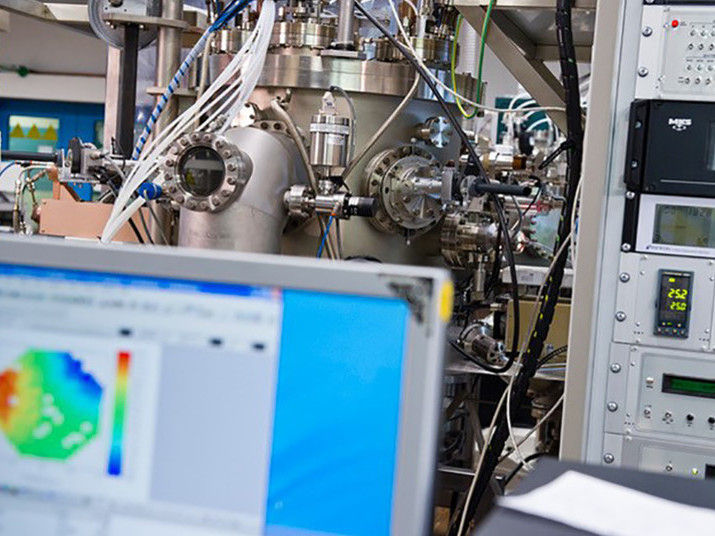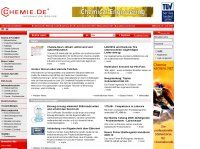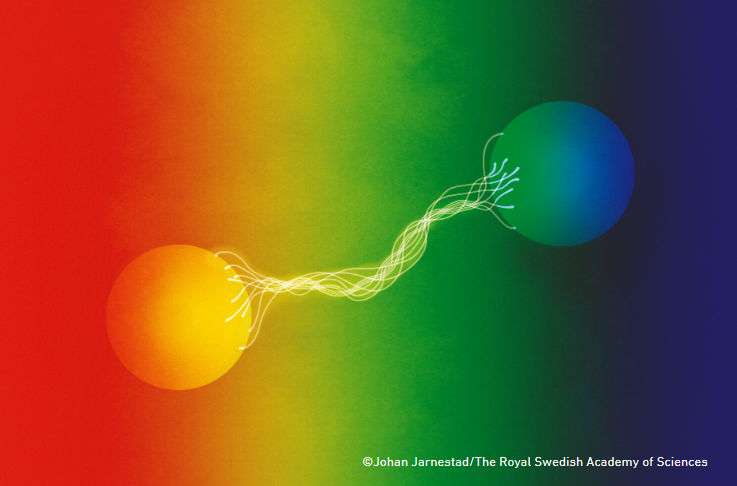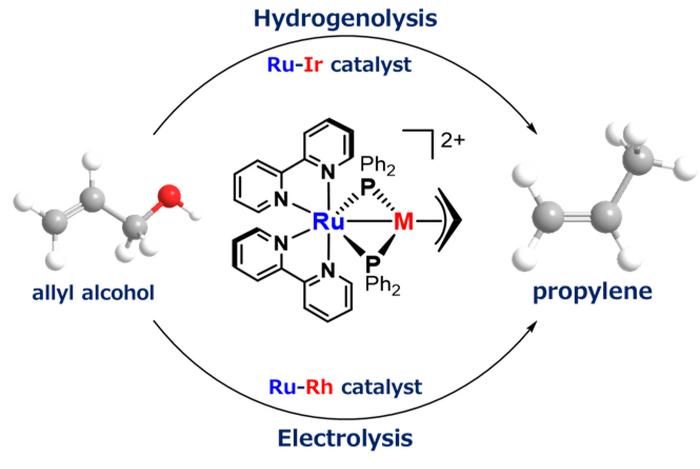A treasure map for the realm of electrocatalysts
Research into promising materials is hampered by the sheer number of possible candidates: An efficient method to solve this problem now developed
Efficient electrocatalysts, which are needed for the production of green hydrogen, for example, are hidden in materials composed of five or more elements. A team from Ruhr-Universität Bochum (RUB) and the University of Copenhagen has developed an efficient method for identifying promising candidates in the myriad of possible materials. To this end, the researchers combined experiments and simulation.

A view of the sputtering machine used to produce the material library counters.
© Christian Nielinger
Millions of systems are conceivable
High entropy alloys (HEAs) are chemically complex materials made up of mixtures of five or more elements. What’s interesting about them is that they offer completely new possibilities for the development of electrocatalysts. Such catalysts are urgently needed to make energy conversion processes more efficient, for example for the production and use of green hydrogen. “The problem with HEAs is that, in principle, millions of high-entropy systems are possible and each system involves tens of thousands of different compositions,” explains Professor Alfred Ludwig, who heads the Materials Discovery and Interfaces Chair at RUB. It is almost impossible to tackle such complexity using conventional methods and traditional high-throughput procedures.
Five sources, six constellations
The researchers describe a new method in their paper that should help to find promising high entropy alloys for electrocatalysis. In the first step, the team developed a way to produce as many potential compositions as possible. For this purpose, they used a sputtering system that simultaneously applies the five base materials to a carrier. “You can imagine this as five spray cans directed at one point on the target,” explains RUB researcher Dr. Lars Banko. This produces a very specific composition of the five source materials on each point of the carrier, so-called materials libraries. Since this composition is also affected by the position of the sources of the source materials, the research team modified them in the experiment. The materials libraries from the manufacturing processes with six different constellations of the sources were subsequently characterized using high-throughput measurements.
The RUB electrochemistry team then examined the materials libraries in this manner for their electrocatalytic activity.” This enables us to identify trends where possible promising candidates are located,” explains Dr. Olga Krysiak, who with Lars Banko is a lead author of the paper. The team matched this data from the experiment with a large simulation data set provided by the researchers at the University of Copenhagen in order to understand the composition of the materials in greater detail. The comparison between simulation and experiment enables the researchers to explore the atomic scale of electrocatalysts, to estimate the statistical arrangement of atoms on the material surface and to determine their influence on the catalytic activity.
Original publication
Lars Banko, Olga A. Krysiak, Jack K. Pedersen, Bin Xiao, Alan Savan, Tobias Löffler, Sabrina Baha, Jan Rossmeisl, Wolfgang Schuhmann, Alfred Ludwig; "Unravelling Composition–Activity–Stability Trends in High Entropy Alloy Electrocatalysts by Using a Data-Guided Combinatorial Synthesis Strategy and Computational Modeling"; Advanced Energy Materials; 2022
Most read news
Original publication
Lars Banko, Olga A. Krysiak, Jack K. Pedersen, Bin Xiao, Alan Savan, Tobias Löffler, Sabrina Baha, Jan Rossmeisl, Wolfgang Schuhmann, Alfred Ludwig; "Unravelling Composition–Activity–Stability Trends in High Entropy Alloy Electrocatalysts by Using a Data-Guided Combinatorial Synthesis Strategy and Computational Modeling"; Advanced Energy Materials; 2022
Topics
Organizations
Other news from the department science

Get the chemical industry in your inbox
By submitting this form you agree that LUMITOS AG will send you the newsletter(s) selected above by email. Your data will not be passed on to third parties. Your data will be stored and processed in accordance with our data protection regulations. LUMITOS may contact you by email for the purpose of advertising or market and opinion surveys. You can revoke your consent at any time without giving reasons to LUMITOS AG, Ernst-Augustin-Str. 2, 12489 Berlin, Germany or by e-mail at revoke@lumitos.com with effect for the future. In addition, each email contains a link to unsubscribe from the corresponding newsletter.
Most read news
More news from our other portals
Last viewed contents

Comprehensive and User-Friendly Chemistry News, Constantly Updated - ChemEurope.COM expands its daily news coverage
Category:Radiobiology
Biotin
Folic_acid

The Nobel Prize in Physics 2022 goes to three quantum researchers from France, USA and Austria - Entangled states – from theory to technology





























































